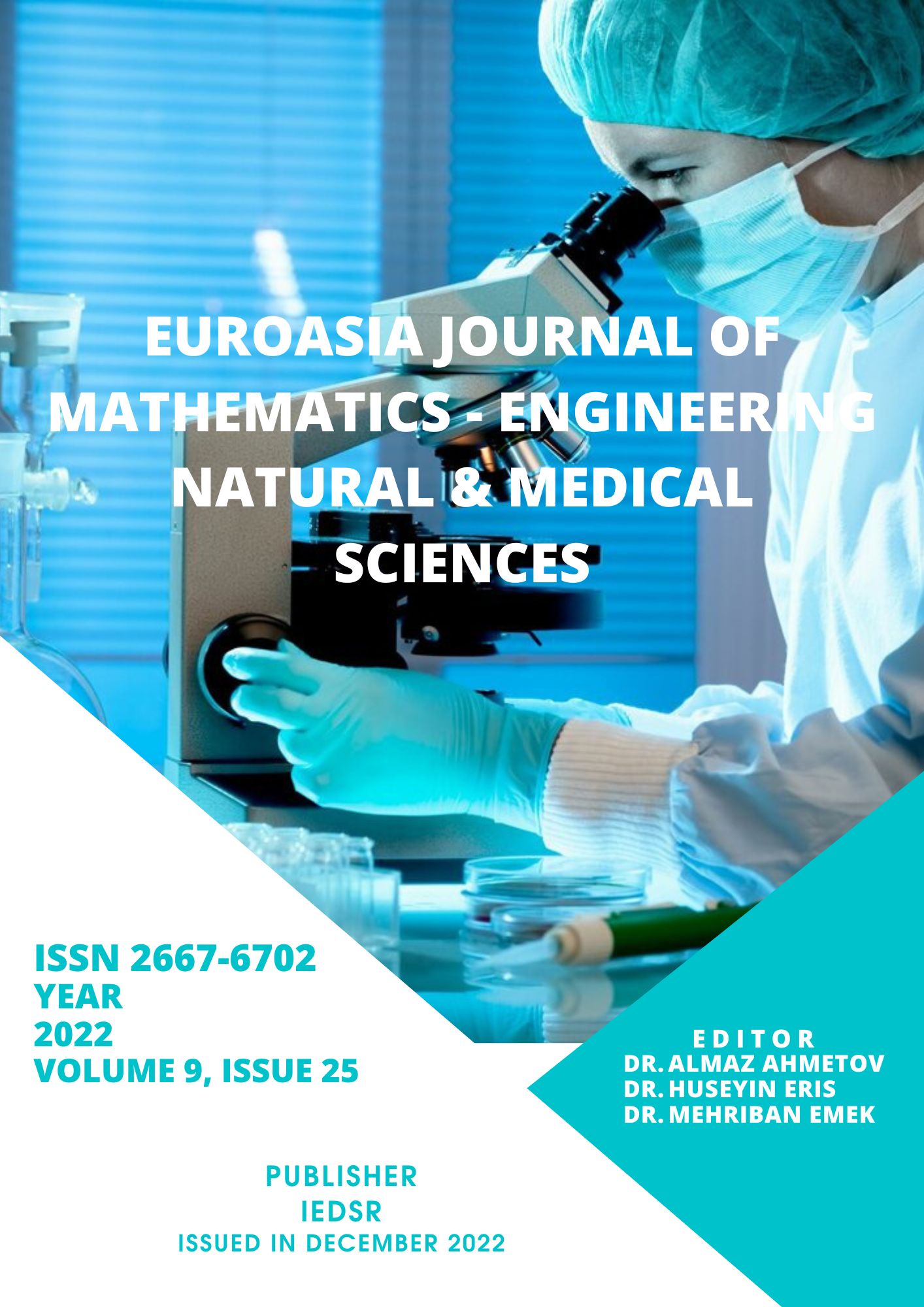Knowledge and Attitudes of Midwifery Students About Newborn Pain Management
DOI:
https://doi.org/10.5281/zenodo.7482531Keywords:
Nweborn, Pain Management, Midwifery, StudentAbstract
This study was conducted to determine the neonatal pain management knowledge and attitudes of midwife candidates. The sample of the research in the descriptive design consisted of 278 students studying in the midwifery department of a public university and volunteering to participate in the research (Participation rate: 84%). Data were collected with the “Descriptive Information Form” and the Neonatal Pain Management Information Form. Descriptive statistics, Mann Whitney U, and Kruskal Wallis tests were used to evaluate the data. It was determined that the mean age of the students participating in the study was 20.46±1.78, and 82.4% of them willingly preferred the department. While 29.5% of the participants stated that they had knowledge about pain assessment scales, 82.4% stated that they did not consider themselves sufficient in pain control in newborns. Midwife candidates stated that they mostly preferred breastfeeding (70.5%), reducing environmental stimuli (68%), listening to music and compassionate approach (64.4%) among non-pharmacological approaches in neonatal pain control. While it was determined that students' knowledge levels were significantly affected by grade level and neonatal health lesson and having knowledge about neonatal pain scales, it was determined that the variable of willingly choosing midwifery department and the graduated high school did not affect it significantly. It was determined that midwifery students had a lack of knowledge about pain management in newborns. It is recommended that midwife candidates be supported on pharmacological and non-pharmacological pain management in newborns with both pre- and post-graduate trainings and that the trainings should be updated regularly according to the pain guidelines.
References
American Academy of Pediatrics Committee on Fetus and Newborn, American Academy of Pediatrics Section on Surgery, Canadian Paediatric Society Fetus and Newborn Committee, D. G. Batton, 2019 Ankara Üniversitesi ISSN: 2667-6044 K. J. Barrington, and C. Wallman, "Prevention and management of pain in the neonate: an update," (in eng), Pediatrics, vol. 118, no. 5, pp. 2231-41, Nov 2006.
Asadi-Noghabi, F., Tavassoli-Farahi, M., Yousefi, H., Sadeghi, T. (2014). Neonate pain management: What do nurses really know? Glob. J. Health Sci.,6:284–293. doi: 10.5539/gjhs.v6n5p284.
Carbajal, R., Rousset, A., Danan, C., Coquery, S., Nolent, P., Ducrocq, S., Saizou, C., Lapillonne, A., Granier, M., Durand, P., Lenclen, R., Coursol, A., Hubert, P., de Saint Blanquat,
Carbajal, R., Eriksson, M., Courtois, E., Boyle, E., Avila-Alvarez, A., Andersen, R.D., Sarafidis, K., Polkki, T., Matos, C., Lago, P., et al. (2015). Sedation and analgesia practices in neonatal intensive care units (EUROPAIN): Results from a prospective cohort study. Lancet Respir. Med. 3:796–812. doi: 10.1016/S2213-2600(15)00331-8.
Costa, T., Rossato, L.M., Bueno, M., Secco, I.L., Sposito, N.P.B., Harrison, D., Freitas, J.S.D. (2017) Nurses’ knowledge and practices regarding pain management in newborns. Revista da Escola de Enfermagem da USP. 51. doi: 10.1590/s1980-220x2016034403210.
Cruz M.D., Fernandes A.M., Oliveira C.R. (2016). Epidemiology of painful procedures performed in neonates: A systematic review of observational studies. Eur. J. Pain. 20:489–498. doi: 10.1002/ejp.757.
Doesburg, S. M., Chau, C. M., Cheung, T. P., Moiseev, A., Ribary, U., Herdman, A. T., et al. (2013). Neonatal pain-related stress, functional cortical activity and visual-perceptual abilities in school-age children born at extremely low gestational age. Pain.; 154(10): 1946-52.
Faye, P. M., De Jonckheere, J., Loogie, R., Kuissi, E., Jeanne, M., Rakza, T., Storme, L. (2010). Newborn infant pain assessment using heart frate variability analysis. Clin J Pain;26:777-82.
Göl, İ., Onarıcı, M. (2015). Hemşirelerin çocuklarda ve ağrı kontrolüne ilişkin bilgi ve uygulamaları. Hacettepe Üniversitesi Hemşirelik Fakültesi Dergisi. 20-29.
Güney, M. (2017). Yenidoğan yoğun bakım ünitesinde çalışan hemşirelerin ağrı yönetiminde kullanılan nonfarmakolojik yöntemlere ilişkin bilgi ve uygulamalarının belirlenmesi. (Yayınlanmamış yüksek lisans tezi). İstanbul Medipol Üniversitesi Sağlık Bilimleri Enstitüsü, İstanbul.
Melo, G. M., Lélis, A. L., de Moura, A. F., Cardoso, M. V., da Silva, V. M. (2014). Pain assessment scales in newborns: integrative review. Rev Paul Pediatr;32:395-402.
Tosun, N. (2021). Hemşirelik öğrencilerinin ağrı yönetimi konusunda bilgi ve tutumları (Master's thesis, İstinye Üniversitesi/Sağlık Bilimleri Enstitüsü).
Özyazıcıoğlu, N., Çelebioğlu, A. (2008). Hemşirelik Yüksekokulu Öğrencilerinin Yenidoğanda Ağrıya İlişkin Bilgi ve Görüşleri. Atatürk Üniversitesi Hemşirelik Yüksekokulu Dergisi, 11: 3 ,9-16
Pillai Riddell, R. R., Racine, N. M., Gennis, H. G., Turcotte, K., Uman, L. S., Horton, R. E., Ahola Kohut, S., Hillgrove Stuart, J., Stevens, B., & Lisi, D. M. (2015). Non-pharmacological management of infant and young child procedural pain. The Cochrane database of systematic reviews, 2015(12), CD006275. https://doi.org/10.1002/14651858.CD006275.pub3
Sağkal, T., Eser, E., & Uyar, M. (2013). The effect of reiki touch therapy on pain and anxiety. Spatula DD.; 3(4): 141-6.
Yiğit, Ş., Ecevit, A., Altun, Ö. Türk Neonatoloji Derneği Yenidoğan Döneminde Ağrı ve Tedavisi Rehberi [Internet]. Ankara: Türk Neonatoloji Derneği; 2016. [Erişim tarihi: 05.09.2022]. Erişim adresi: http://www. neonatology.org.tr/neonatoloji/tani-ve-tedavi-protokolleri/
Downloads
Published
How to Cite
Issue
Section
License
Copyright (c) 2022 Euroasia Journal of Mathematics, Engineering, Natural & Medical Sciences

This work is licensed under a Creative Commons Attribution-NonCommercial 4.0 International License.


